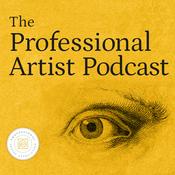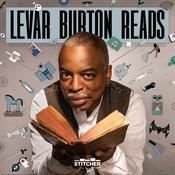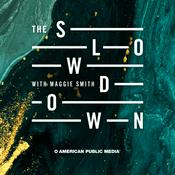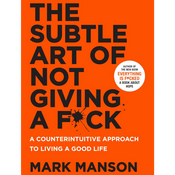276 episodes

Handel Messiah w/ Aram Demirjian
2025/12/18 | 1h 9 mins.
A piece that I have been asked to cover probably a dozen times is Handel's Messiah. It's a piece I love, but a piece that I've never conducted or played, and so therefore I don't know it incredibly well. There are plenty of pieces like this in the repertoire, and so I've decided to start a new series on Sticky Notes, which will be to take pieces that I don't know very well and to bring on experts to help me learn about them. This series will be a bit sporadic, and won't disrupt the but I'm really excited to share the first episode in this series, all about the Handel Messiah, featuring my good friend and the wonderful conductor Aram Demirjian, the Music Director of the Knoxville Symphony! I really hope you enjoy this episode and that you have a Happy Holidays and New Year!

Gustav Holst: The Planets
2025/12/04 | 1h 2 mins.
Mr. Holst, wherever you are, I apologize in advance for what I'm about to say. From my research, I know you resented this fact, but unfortunately, I think it's true. Here it is: despite the large catalogue of music Gustav Holst composed, much of it wonderful, he is essentially a one-hit wonder in the classical music world, à la Pachelbel, Dukas, Mascagni, and others. His one hit is a big one, though: an epic, seven-movement suite entitled The Planets. As I said, Holst was not happy about this in the slightest. He was a prolific composer and someone who devoted himself fully to his subjects. He considered other works he wrote better than The Planets, and yet, in the end, we hear very little of his other music, though since the 1980s some of it has been performed more frequently, particularly in the UK. But The Planets is truly a hit: the reason we know Holst's name today, and one of the most frequently performed pieces in the entire Western classical canon. Holst took a novel approach to his depiction of the planets. They are not ordered by their astronomical distance, but by musical cohesiveness. Nor do they depict the planets in a scientific sense; instead, they present a deeply personal astrological interpretation, something we'll explore as we discuss the piece. The orchestration is massive yet subtle, with colors unique both to the work itself and to Holst's output more broadly. It is easy to listen to and straightforward, while also somehow intensely complex and varied. It is powerful, Romantic, thrilling, joyous, mysterious, terrifying, and ultimately cosmic in both conception and execution. This is one of those pieces that people love without necessarily giving it the full respect it deserves. So today on the show, we'll learn a little about Holst's life, what led him to write The Planets, and why this piece grabs hold of us and doesn't let go throughout our journey through the stars. Join us!

Franck Symphony in D Minor
2025/11/20 | 59 mins.
In the 1960s, Leonard Bernstein famously helped to popularize the music of a then relatively obscure composer, Gustav Mahler. His work, as well as the work of other conductors, made Mahler into a classical-music household name. Mahler's symphonies are played every year all over the world, and he is firmly ensconced in the so-called canon of standard orchestral repertoire. Would it surprise you to know that Franck's D Minor Symphony once had the same reputation? It was played almost every year by most major orchestras, it was recorded by all the great conductors, and it was a fixture of the canon just like a Brahms symphony. Nowadays you would be lucky if, outside of France and Belgium, you hear Franck's Symphony once every five years, if that. The truth is that, other than a short golden period for this symphony, it has either been controversial (around the time it was premiered) or ignored (nowadays), which is a real shame, since it is a glorious piece that I would argue is drastically underrated in our modern world. The symphony was radically innovative for its time, which probably explains some of the more virulent criticism it received, but even though those innovations now sound completely normal to our ears, they are still at the heart of what makes this symphony so profoundly satisfying to listen to. Ahead of my performances of the symphony in Lille this December, I wanted to dive in and explore this unfairly ignored masterpiece. In about 40 minutes of music in three grand movements, Franck pours his soul into this work. That phrase sounds a bit cliché, I know, but I really mean it; there is an earnestness about this music that I find deeply moving, and it is something we will explore together today. We will talk about Franck's late entry into the world of composition, his reputation as an organist, and the challenges he faced in finding acceptance as a composer. Along the way, we will discuss this gorgeous piece in all of its passion and intensity. Join us!

Ravel and Falla: Echoes of Spain
2025/11/06 | 57 mins.
Nowadays it's hard to imagine Maurice Ravel as a "bad-boy" revolutionary, a member of a group whose name can be loosely translated as The Hooligans. To most listeners today, Ravel's music is the very picture of sumptuous beauty. But the group he belonged to, Les Apaches ("The Hooligans"), earned its name because of its members' uncompromising attitudes about music; attitudes that clashed sharply with the conservative tastes of the establishment. Another composer who belonged to Les Apaches was the Spanish composer Manuel de Falla. Falla is certainly not as well known as Ravel, but the two became fast friends when he arrived in Paris in 1907. They formed a kind of mutual-admiration society that proved immensely fruitful for both of them. Falla was deeply impressed by Ravel's Spanish-inflected music, marveling at its authenticity given that Ravel was French. But Ravel, now a symbol of French music, was the son of a Swiss father and a Spanish-speaking mother, and he was born just eleven miles from the Spanish border in the Basque region. His Spanish voice was no affectation; it came from somewhere deep within, and Falla noticed this immediately, remarking that Ravel's Rapsodie espagnole was "a Spain ideally presented by his mother." Today on the show we'll explore the Spanish world of Falla and Ravel through two central works: Falla's Nights in the Gardens of Spain and Ravel's Rapsodie espagnole. These pieces, both astonishing in their creativity and craftsmanship, offer a wonderful opportunity to compare and contrast the music and approaches of these two close friends. We'll also talk about Les Apaches and their goals, legacy, and some of their legendary members. All this and more is coming up on this final collaboration on Ravel and Friends with G. Henle Publishers! Join us!

Shostakovich Symphony No. 10 LIVE w/ The Aalborg Symphony
2025/10/27 | 59 mins.
Longtime listeners of Sticky Notes know that Shostakovich's 10 symphony was the inaugural piece covered on the show. It's been 8 years(!) since that show, so I've totally re-written the episode and had the privilege of presenting this new version live with the Aalborg Symphony Orchestra last week in Aalborg. Shostakovich, like so many composers before him, was obsessed with musical codes and messages, with songs that expressed two or more meanings, with ideas that were at once black and white and profoundly complex. This also describes Shostakovich himself, a man who was incredibly guarded with his public persona, and even his private persona as well. It is impossible to know anything for sure with Shostakovich, and to me therein lies the greatest strength of his music. The 10th symphony has been described as a portrayal of the Stalin years, as a portrayal of obsessive love, as a requiem, as sarcastic, as humorous, as agonizing, as triumphant, as, as, as….and the truth is that like all of the greatest works of Western Classical music, it is all of those things and so much more. It is a work of profound intensity, grabbing you from the start and not letting go for nearly 50 minutes, which makes sense considering that the piece was written in the shadow of another momentous event, the death of Joseph Stalin. There are very few experiences like hearing Shostakovich's 10th symphony live, and it is the kind of piece that, by the end of it, leaves you a slightly different person than you were when it started. Today on the show, we're going to be talking about a wide range of topics, from orchestral color to Joseph Stalin, from symphonic form to obsessive love, and much more. Join us!
More Arts podcasts
Trending Arts podcasts
About Sticky Notes: The Classical Music Podcast
Listen to Sticky Notes: The Classical Music Podcast, Amapiano Mix and many other podcasts from around the world with the radio.net app

Get the free radio.net app
- Stations and podcasts to bookmark
- Stream via Wi-Fi or Bluetooth
- Supports Carplay & Android Auto
- Many other app features
Get the free radio.net app
- Stations and podcasts to bookmark
- Stream via Wi-Fi or Bluetooth
- Supports Carplay & Android Auto
- Many other app features


Sticky Notes: The Classical Music Podcast
download the app,
start listening.






































